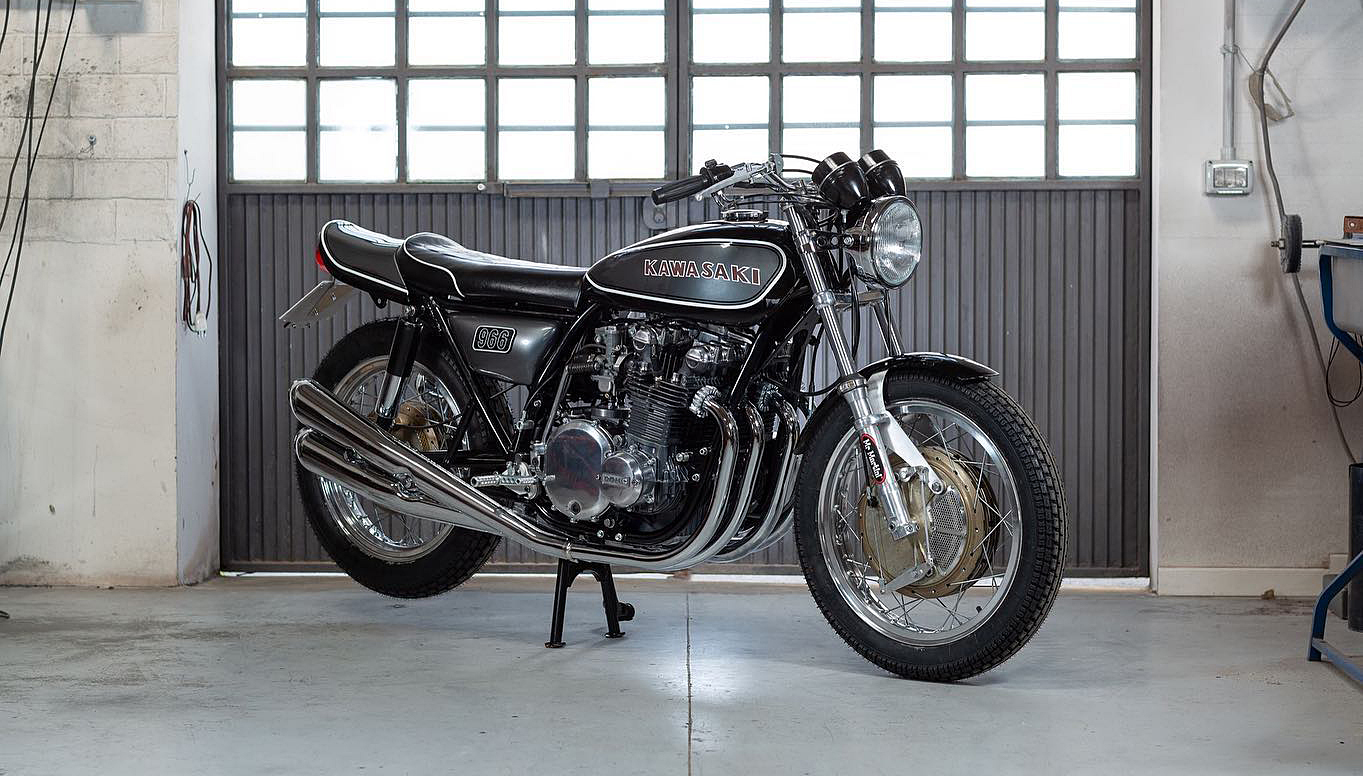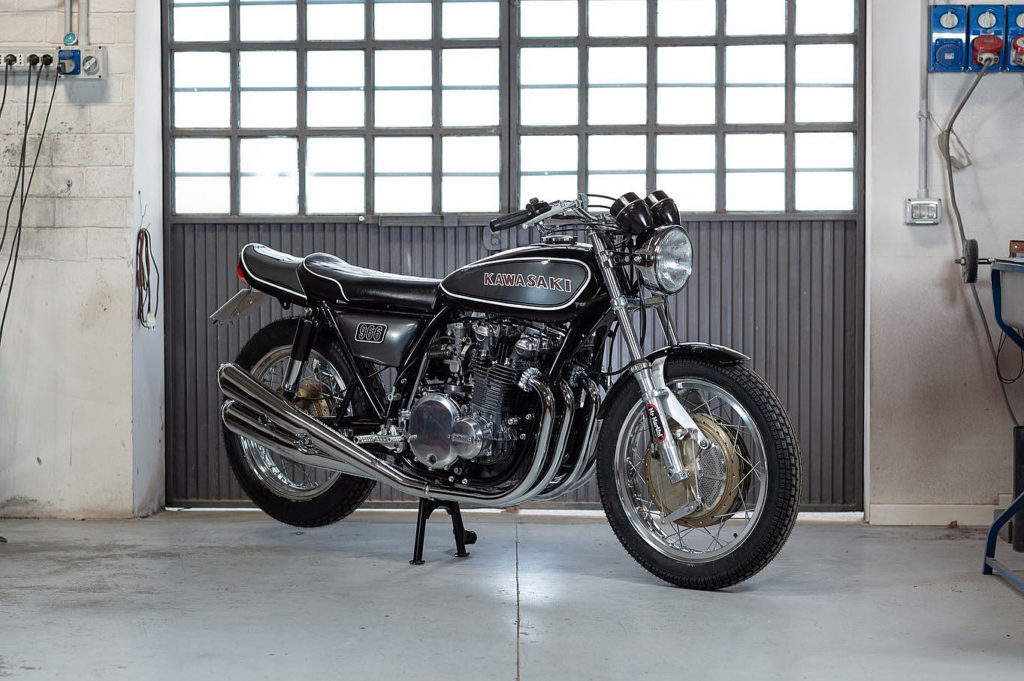
If you’re a war buff or were paying attention in history class, then you’ll no doubt have a brain full of code names given to the military operations of WW2 like Overlord and Acumen. The element of surprise was everything and keeping your plans under wraps in a world of spies was a deadly game. But those code names also dominated the motorcycle wars and the secret project ‘New York Steak’ would result in one of the most iconic two-wheeled machines of all time. Unlike many other classics that have gone in and out of favour, the Kawasaki Z has always been beloved, and for Italian builder Nicola Martini it was love at first sight. So, Mr Martini has built a Kawasaki Z900 as if he oversaw a special bike division back in the day, at the big K.
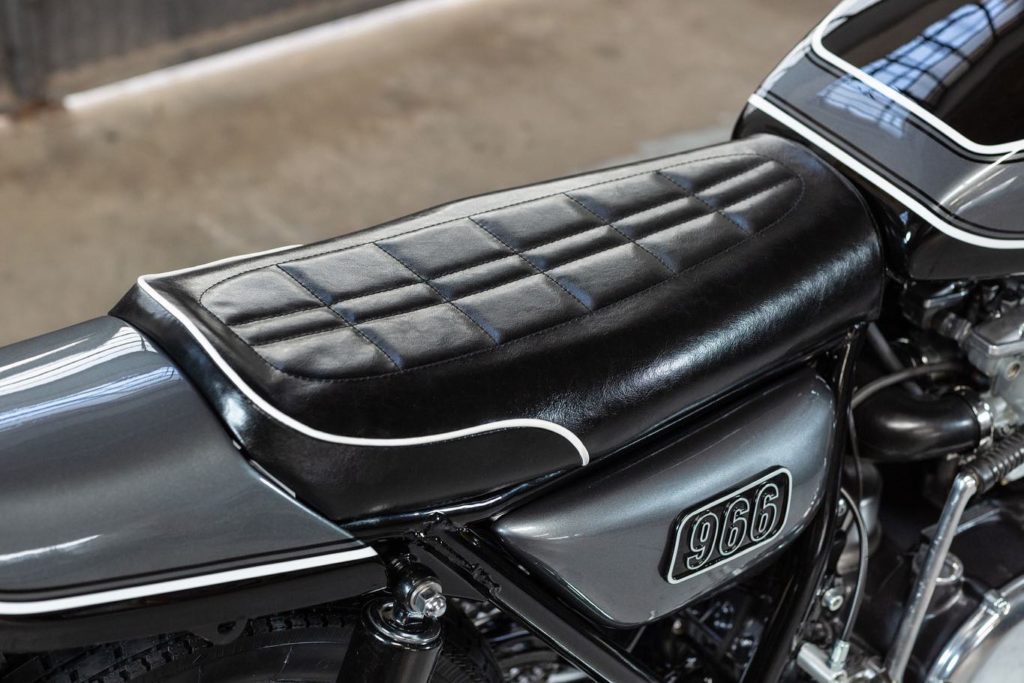
His creation also has a code name, 966, and the approach he’s taken is a refreshing change to the resto-mod or concourse builds that we often see in the form of a Z. When it came time to build his version, Nicola had firm ideas on the approach, “It takes respect. These icons from the past are part of us. We always dreamed about her when we were kids, I still remember the little model my father gave me. Now that I’m almost her age I had the honour of reliving one that was more than that.” Mr Martini has been at this game of custom bike building for 27 years and brings a maturity and wisdom that few others can muster.
The Z is of course celebrating 50 years, and although it was finally released in 1972 to international acclaim, the project had begun much earlier. With Kawasaki’s famous two-stroke triples ready to hit the market, the company issued a brief to engineer Gyoichi ‘Ben’ Inamura to lead a team and develop a four-stoke sport bike. The original code name for the project was N600, but with a significant study of the American market where the company believed sales would be strongest, a new code name was found. Then came a huge shock.
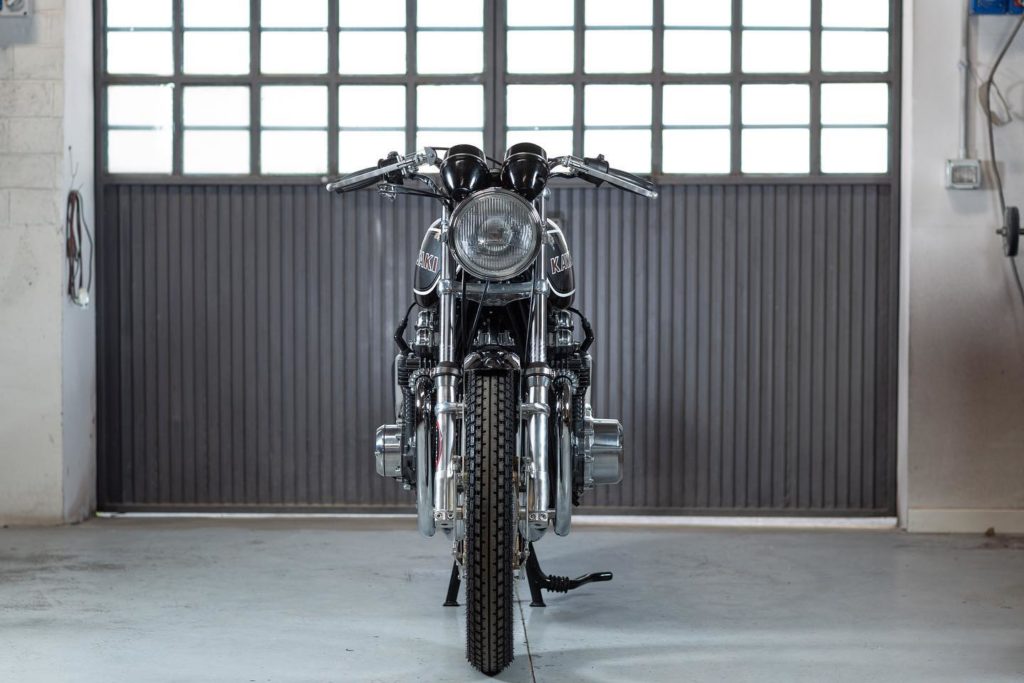
Having poured their heart and soul into the project, the team who had come up with a four-cylinder, across the frame motorcycle, walked into the Tokyo Motorcycle Show in October 1968 and saw before them the Honda CB750. They’d be beaten to the punch; the press was going mad for their rivals’ machine and it would have been easy to concede defeat. Instead, it proved to be the best thing to ever happen to the company. A new directive was issued; up the capacity to 900cc and make more HP than the Honda, in the meantime, Kawasaki would let their H2 750 shine.
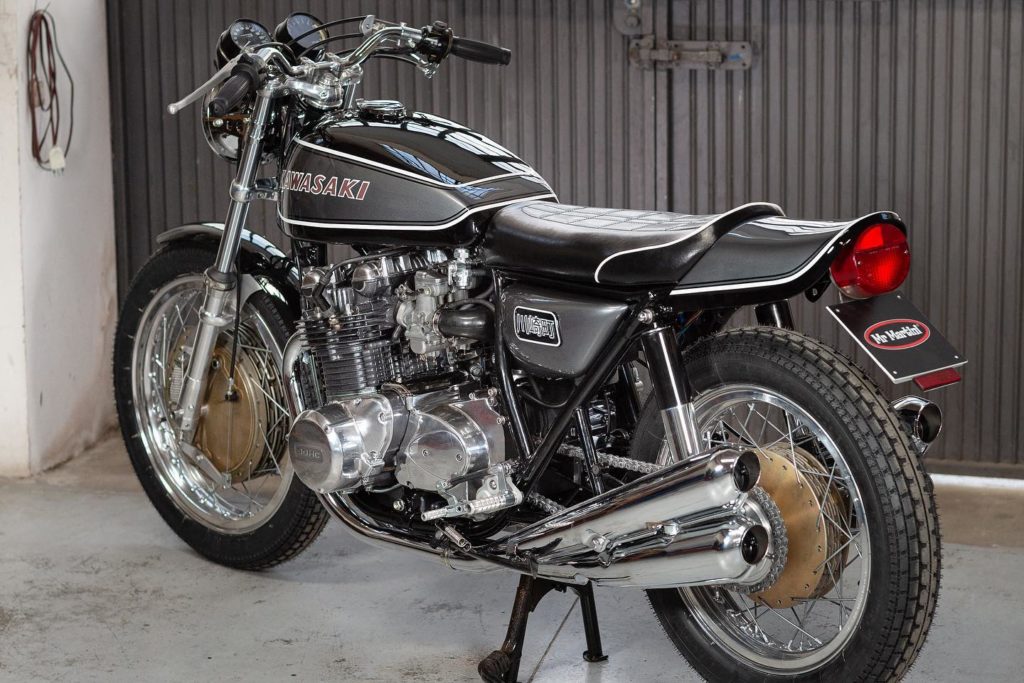
While the design crew worked on the styling of the bike, the finished frames and engines were ridden by Bryon Farnsworth and later Paul Smart to see exactly what the new bike could do. Testing was moved to America, and the thing was flying. A top speed of 225km/h, ¼ miles run in the high tens and it was just a matter of actually detuning the engines for reliability and the mechanical package was sorted. They put them on American roads to ensure nothing would break and dressed them up with Honda badges and paint schemes to throw off any spying journalists.
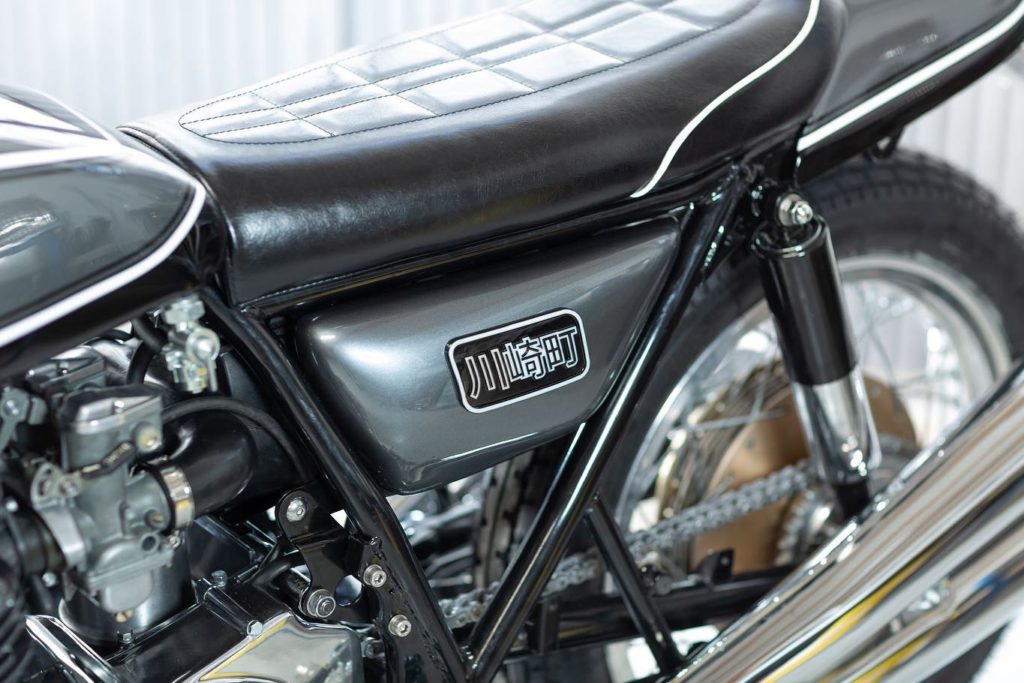
Back at Kawasaki, three designs had been finished in clay, one that looked like a classic British machine in black, a body set that mirrored much of the design of the company’s H2, and thank the lord, the final one was the beautiful look that everyone would come to know and love. In September 1972 at the Cologne Motorcycle Show the Z1 had a hugely successful launch and bikes were quickly sent out to dealers and race teams around the world. They flew off the shelf, served as marshalling bikes at some major races and began to dominate the all-important Castrol 6hr race for years to come.
In 1976, an update arrived, known in some markets as the KZ900 and simply as the Z900 in others, and it continued the legacy. It is one of these examples that Mr Martini picked up from which to build his own creation and instantly those who worship at the altar of Z will have noticed an important and significant change. In 2022, even a crap new motorcycle comes with decent brakes, in the ’70s the best motorcycles came with crap brakes. For the Z900, Kawasaki switched to a twin-disc front end and to exaggerate and pay homage to this change, Nicola has fitted an enormous racing drum brake to also give the bike a vintage vibe.
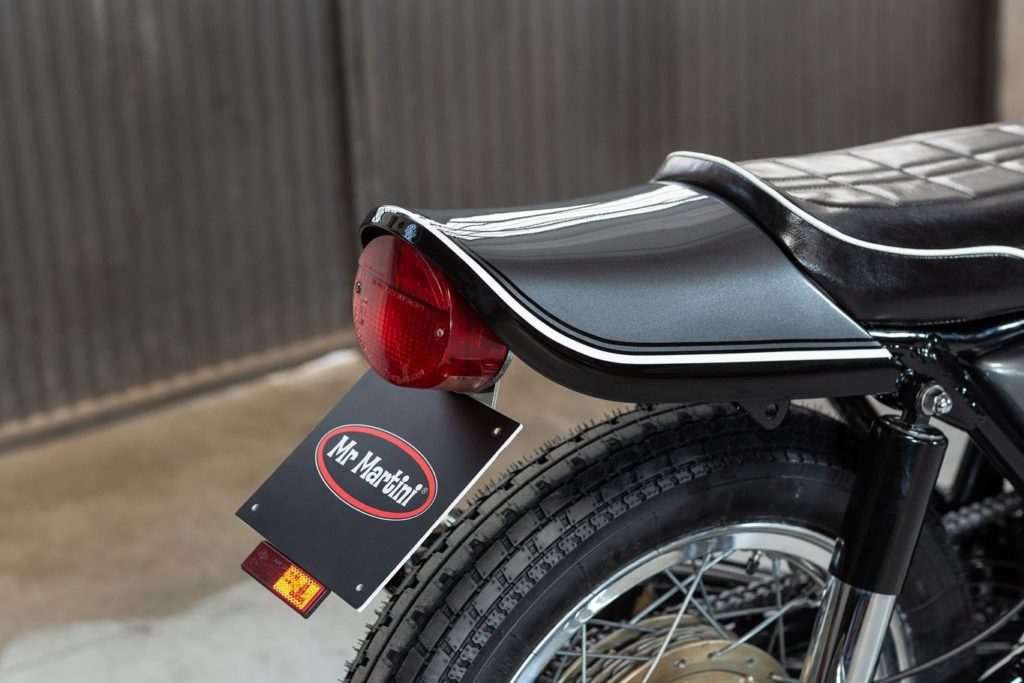
The styling of the bike stays very much true to the original, but instead of colour schemes like the ‘Jaffa’, he’s painted the bike in a stunning black and silver, as would have been the case if factory design number one had been given the go-ahead. The final touch to his Z tribute machine is to restore the power that was robbed from the original machine by the bean counters worried about warranty claims. The 966 code name will give a big hint as to what sits inside the cases, but complete with the favoured bank of carbs and those beautiful four mufflers, it looks factory fresh in the best possible way. This is very much a case of simply letting the pictures do the talking, as we raise our glasses to Mr Martini and his incredible Z.
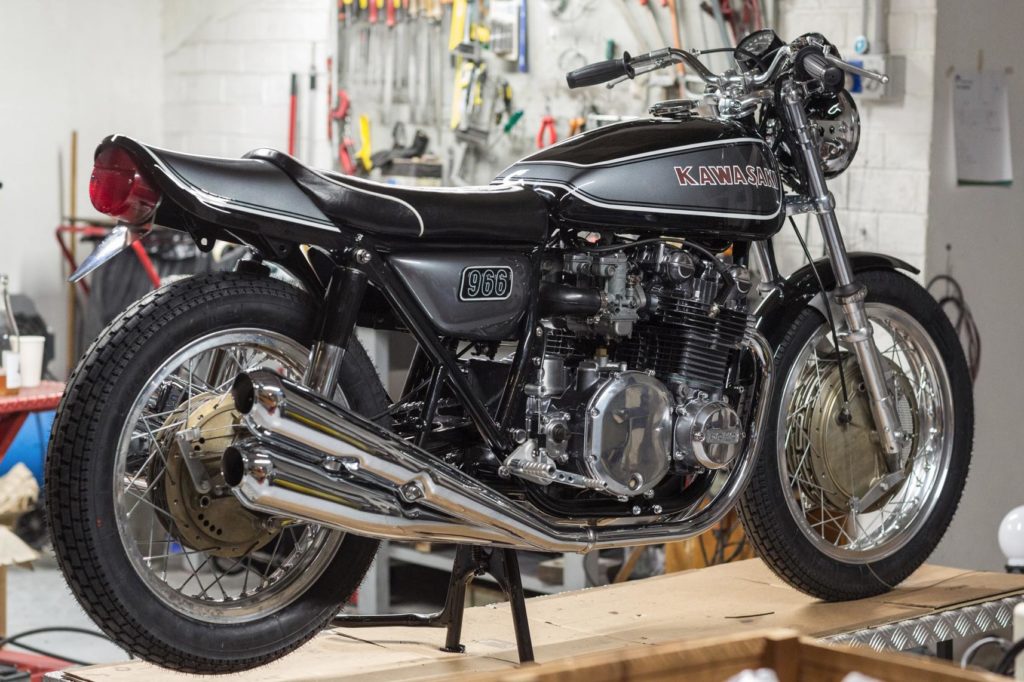
[ Mr. Martini – Instagram ]

